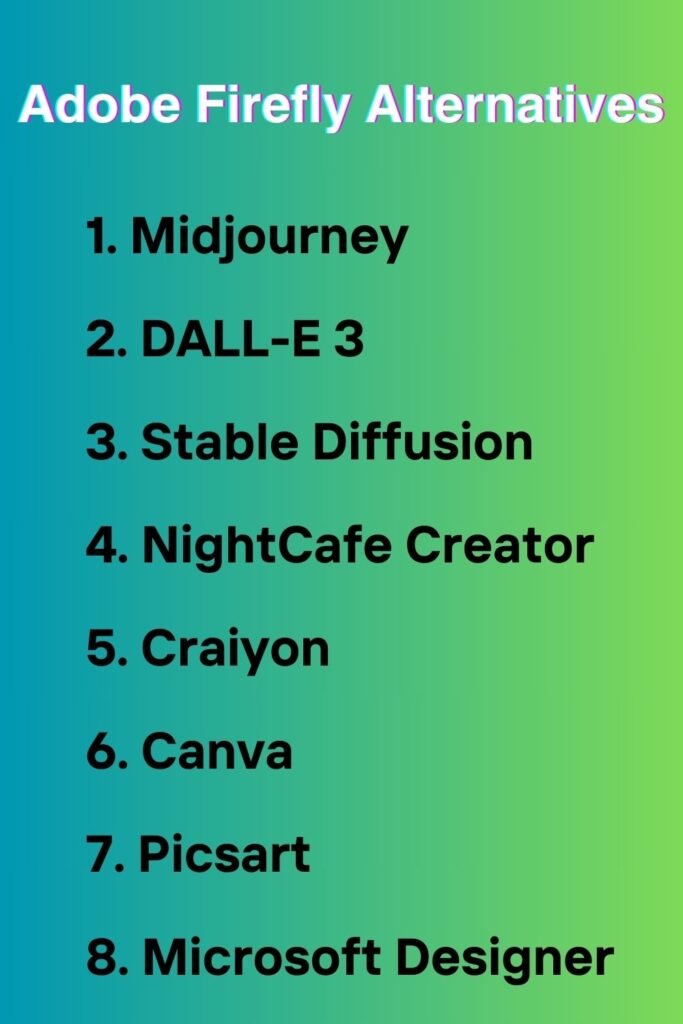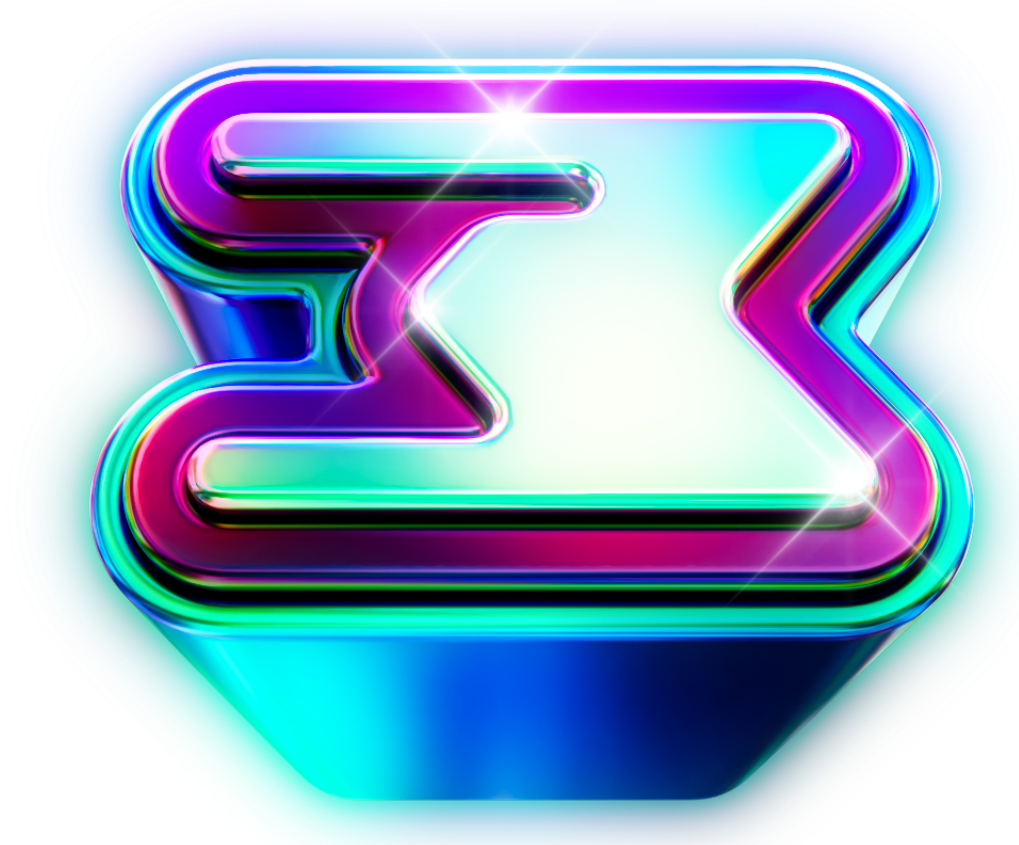Adobe Firefly, the AI-powered image generation tool, has recently generated a lot of buzz in the creative community. With its ability to transform text descriptions into visually stunning images, Firefly promises to revolutionize the way we approach graphic design and content creation.
However, as with any new technology, potential limitations and drawbacks have emerged, such as cost concerns and restrictive terms of service.
In this guide, we’ll explore some promising alternatives to Adobe Firefly, each offering unique features and capabilities to cater to various user needs and preferences. Whether you are a professional designer, a hobbyist, or simply curious about the world of AI-generated imagery, this comprehensive guide will provide you with valuable insights to help you make an informed decision.
Top Considerations When Choosing an Alternative
Before diving into the alternatives, it’s essential to consider a few key factors that will influence your choice:
- Functionality
AI-powered image generation: Tools that leverage advanced AI algorithms to create images from textual descriptions or prompts.
- Broader graphic design tools
Platforms that offer a range of features beyond image generation, such as image editing, video creation, and more.
- Skill Level
Beginner-friendly interfaces: User-friendly platforms suitable for those new to AI-powered image generation or graphic design.
- Advanced tools
Solutions designed for experienced users or those with technical knowledge.
- Cost
Free options: Tools that offer basic functionality at no cost.
Paid options: Platforms with premium features or subscription models for more advanced capabilities.

Top Adobe Firefly Alternatives
1. Midjourney
Midjourney is a leading AI-powered image generation tool that has gained significant popularity among artists and creatives.
It utilizes advanced natural language processing and machine learning algorithms to produce high-quality images based on textual prompts.
Users can refine and iterate on their image generations through a conversational interface.
Pros:
- Produces highly detailed and visually stunning images across various styles and genres.
- User-friendly interface with a supportive community for feedback and guidance.
- Constantly evolving and improving through regular updates.
Cons:
- Limited free trial period, requiring a paid subscription for continued access.
- Can be resource-intensive, especially for complex image generations.
2. DALL-E 3
DALL-E 3 is the latest iteration of OpenAI’s groundbreaking AI image generation system.
It boasts improved performance, higher resolution outputs, and the ability to generate images from both text prompts and image uploads.
DALL-E 3 also supports image editing and manipulation tasks.
Pros:
- Cutting-edge AI technology capable of producing impressive and innovative results.
- Supports a wide range of image generation and editing tasks.
- Active research and development by OpenAI ensures continuous improvements.
Cons:
- Currently limited access, with a waitlist for interested users.
- Potential concerns around data privacy and ethical implications of AI-generated content.
3. Stable Diffusion
Stable Diffusion is an open-source AI model for image generation, developed by Stability AI and researchers from various institutions.
It allows users to create high-quality images from text prompts or seed images.
Stable Diffusion can be run locally or accessed through various online platforms and services.
Pros:
- It’s open-source and free fostering collaboration and innovation.
- Continuously improved and updated by a growing community of contributors.
- Flexible deployment options, including local installations and cloud-based services.
Cons:
- Technical knowledge may be required for local installations and customizations.
- Varying levels of support and documentation across different platforms and services.
4. NightCafe Creator
NightCafe Creator is a user-friendly platform that offers AI-powered image generation and editing tools.
It utilizes various AI models, including Stable Diffusion, to create images from text prompts or uploaded images.
NightCafe Creator also provides image upscaling and enhancement capabilities.
Pros:
- Beginner-friendly interface with a simple and intuitive workflow.
- Offers a range of AI models and customization options for image generation.
- Supports image upscaling and enhancement tools for improved image quality.
Cons:
Limited free credits for image generations, requiring a paid subscription for extended use.
Potential for lower image quality compared to some advanced AI models.
5. Craiyon
Craiyon, previously known as DALL-E Mini, is a free online tool for AI-powered image generation.
It allows users to create images from text prompts, with a focus on accessibility and ease of use.
Craiyon offers a simple and straightforward interface for generating images quickly.
Pros:
- Free to use, with no registration or subscription required.
- Intuitive interface suitable for beginners and casual users.
- Generates images relatively quickly, ideal for quick iterations and experimentation.
Cons:
- Limited image quality and resolution compared to more advanced AI models.
- Fewer customization options and features compared to paid alternatives.
- Potential for inconsistent or unexpected results due to the underlying AI model’s limitations.
6. Canva
Canva stands out as an online graphic design platform that offers a wide range of tools and features.
In addition to traditional design tools, Canva has recently introduced AI-powered image generation capabilities.
Users can create images from text prompts or upload images for editing and enhancement.
Pros:
- User-friendly interface suitable for both beginners and professionals.
- Offers a comprehensive suite of design tools beyond image generation.
- Extensive library of templates, graphics, and design elements.
Cons:
- AI image generation capabilities may be more limited compared to dedicated tools.
- Certain advanced features and resources require a paid subscription.
7. Picsart
Picsart is a versatile photo and video editing platform that also offers AI-powered image generation capabilities.
Users can create images from text prompts or use AI tools for image enhancement and editing.
Picsart provides a range of creative tools and effects for further image manipulation.
Pros:
- Combines AI image generation with powerful photo and video editing tools.
- User-friendly interface suitable for various skill levels.
- Offers a mobile app for on-the-go editing and creation.
Cons:
- AI image generation capabilities may be more limited compared to dedicated tools.
- Certain advanced features and resources require a paid subscription.
8. Microsoft Designer
Microsoft Designer is a graphic design app that leverages AI to assist with image creation and editing tasks.
It offers AI-powered image generation, image manipulation, and design automation capabilities.
Microsoft Designer is integrated with other Microsoft Office applications for seamless workflows.
Pros:
- Tight integration with Microsoft Office suite for enhanced productivity.
- Combines AI-powered image generation with design automation tools.
- Offers a familiar and user-friendly interface for Microsoft users.
Cons:
- AI image generation capabilities may be more limited compared to dedicated tools.
- Requires a Microsoft 365 subscription for full access.
Read: Top 5 Best Web Browsers for Mac
Conclusion
As the world of AI-powered image generation continues to evolve, the variety of options available to users is truly remarkable. From dedicated tools like Midjourney and DALL-E 3 to versatile platforms like Canva and Picsart, there is an alternative to suit every need and preference.
When choosing an Adobe Firefly alternative, it’s essential to evaluate your specific requirements, skill level, and budget. Some tools excel in producing highly detailed and visually stunning images, while others offer a more user-friendly experience or a broader range of design features.
Ultimately, the future of AI image generation is inspiring, and these alternatives represent just the beginning of what’s possible. As technology continues to advance, we can expect even more innovative and powerful tools to emerge, pushing the boundaries of creativity and redefining the way we approach visual content creation.





